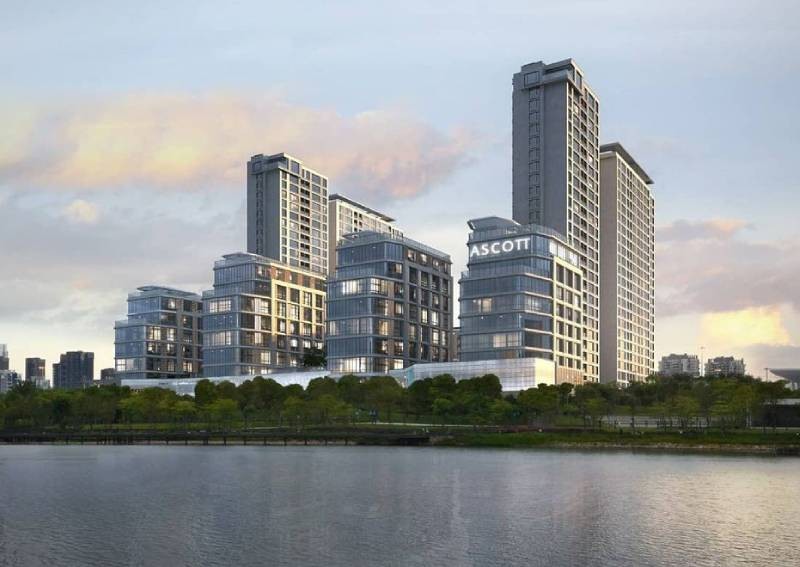5 reasons to like CapitaLand Retail China Trust's latest acquisition


CapitaLand Retail China Trust, or CRCT, has announced an expansion of its investment strategy, hot on the heels of Mapletree North Asia Commercial Trust’s own expansion of its investment mandate.
As a recap, CRCT is Singapore’s first and largest China shopping mall REIT.
The REIT owns a portfolio of 13 shopping malls located in eight Chinese cities spanning a total gross floor area of around 1 million square metres.
CRCT’s investment strategy has now expanded to include office and industrial properties in addition to retail and can include business parks, data centres or integrated developments.
This change positions the REIT for better growth prospects as it opens up a wider range of assets for acquisitions.
Effectively, CRCT will become CapitaLand Limited’s dedicated vehicle for the injection of the group’s China non-lodging-related assets.
ALSO READ: Which blue-chip is a better buy: CapitaLand or CDL?
Almost a week after the REIT expanded its investment mandate, it announced a massive acquisition that is set to increase its assets under management (AUM) by 28.5 per cent. The total gross floor area will rise by 76 per cent from the current one billion square metres to 1.77 billion square metres.
CRCT will acquire five business park properties and the balance 49 per cent interest in Rock Square for a total acquisition cost of around $822.4 million.
These acquisitions will be funded by a combination of debt, equity and hybrid securities.
Here are five reasons to like this acquisition.
[embed]https://www.instagram.com/p/CFgcSTFnV4C/?utm_source=ig_web_copy_link[/embed]
Business parks are an asset class that enjoy growing demand underpinned by robust industry drivers.
The addition of this resilient asset class helps the REIT to better weather economic storms such as the Covid-19 pandemic.
Business parks contain high-growth and innovation-led industries that can continue to operate despite the crisis, such as electronics, financial services and e-commerce.
China’s 13th five-year plan (FYP) for the period 2016 to 2020 prioritises a services-led growth model, and the introduction of policies aimed at small and medium enterprises.
The latest FYP focuses on domestic growth and the Middle Kingdom’s self-sufficiency.
Both policies bode well for business parks.
[embed]https://www.instagram.com/p/CEyF5I5nw5N/?utm_source=ig_web_copy_link[/embed]
The four business parks are situated in well-established zones that enjoy excellent connectivity to city centres and transportation hubs.
The buildings are equipped with amenities that support a modern workforce, such as communal spaces with landscaping, a campus-style workplace and facilities such as basketball courts.
The inclusion of such facilities enhances the buildings’ attractiveness to tenants.
As such, the business parks have strong tenants such as semiconductor and software company Qualcomm, electronics giant TDK Corporation and Chinese insurance conglomerate Ping An Group.
Committed occupancy stands at 91.5 per cent, which is above the market average for such assets.
These acquisitions are expected to have a positive impact on the REIT’s portfolio.
The annualised net property income (NPI) yield for the acquired properties is 5.8 per cent, which is higher than the existing portfolio’s 4.3 per cent.
This higher NPI yield from the acquisitions should help to pull up the REIT’s overall NPI yield.
For the pro-forma first-half 2020 distribution per unit (DPU), this is expected to rise by 5.1 per cent from $0.0434 for the existing portfolio to $0.0456 for the enlarged portfolio.
AUM for the enlarged REIT will rise by 28.5 per cent to $4.5 billion, and a larger asset base also means the REIT can command better bargaining power when it comes to future acquisition deals.
NPI is slated to rise by 54.1 per cent from $88 million in the first half of 2020 to $135 million, along with a 76 per cent increase in gross floor area to around 1.77 million square metres.
ALSO READ: 4 REITs that can ride on China's Covid-19 recovery
Also, the new properties have a slightly longer land tenure of 50 years compared to the 40 years for retail assets which make up the REIT’s current portfolio.
The land tenure expiry range for the new properties ranges from 2045 to 2064, thereby lengthening the overall land tenure range for the enlarged portfolio.
[embed]https://www.instagram.com/p/CGrAWJMHC2U/?utm_source=ig_web_copy_link[/embed]
CapitaLand is well-known for its expertise in China and has in-depth market knowledge on the property market there.
Besides, the group also has a full range of real estate resources there.
The REIT will enjoy efficient property management with CapitaLand’s expertise, and a “one-stop” call centre will also enhance tenants’ experience.
The future looks bright for the REIT as it will become a vehicle for CapitaLand to inject further China assets into.
With the expansion of its investment mandate to include a broader range of property sub-types, CRCT can look forward to the further diversification of its growing portfolio.
This article was first published in The Smart Investor. Disclaimer: Royston Yang does not own shares in any of the companies mentioned.